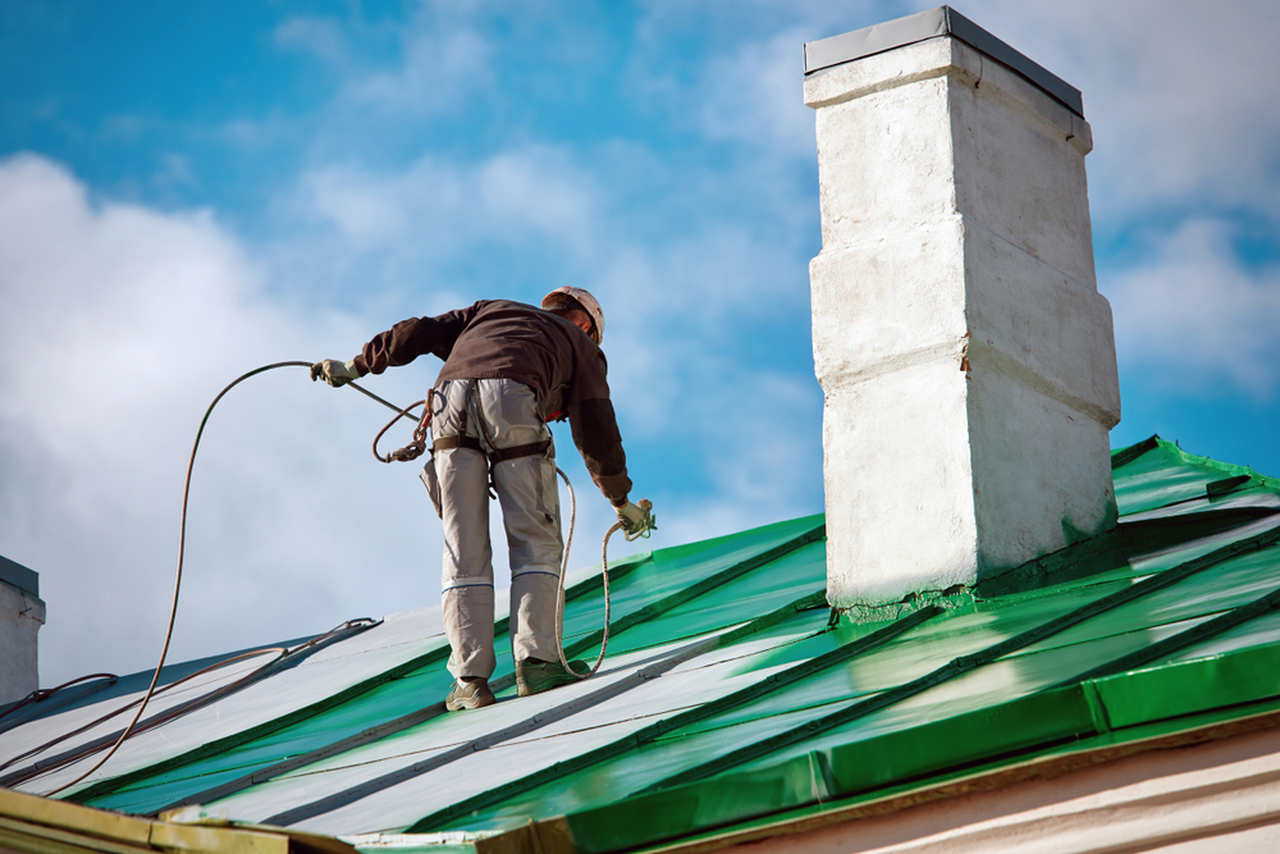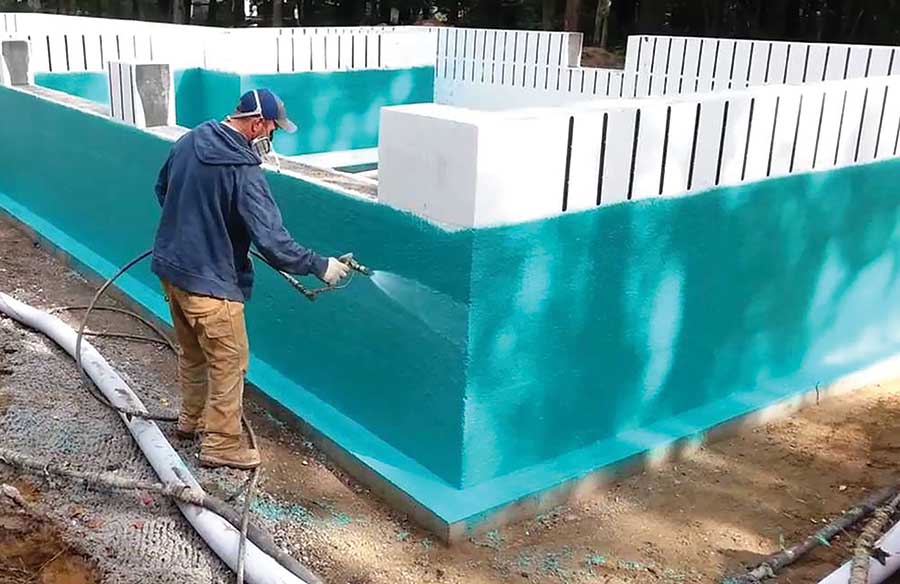Sorts of Waterproofing: Discovering the Various Techniques and Their Applications
Waterproofing is a vital facet of building and construction and upkeep. It safeguards structures from the detrimental impacts of water damages. There are several approaches available, each with its one-of-a-kind applications and benefits. From membrane systems to cementitious services, recognizing these choices is necessary for reliable implementation. The option of waterproofing method can greatly influence sturdiness and longevity. Discovering these various methods reveals their unique benefits and prospective difficulties, triggering further factor to consider of perfect options.
Membrane Waterproofing Solutions
Membrane layer waterproofing systems function as a crucial barrier against water invasion in numerous frameworks. These systems commonly contain slim sheets made from products like rubber, polycarbonate, or asphalt, which are related to surfaces to protect against dampness infiltration. They can be mounted over or listed below quality and are specifically effective in locations vulnerable to high water exposure, such as basements, roofs, and foundations.The setup process includes cleansing the substrate, using adhesives or primers, and precisely suitable the membrane to guarantee total coverage. Membrane layer systems can be either completely stuck, mechanically affixed, or laid loose, relying on the details needs of the task. They provide sturdiness and versatility, suiting structural motions without compromising their waterproofing abilities. These systems can be strengthened with additional layers for boosted defense. Ultimately, membrane waterproofing systems are necessary for protecting structures against water damages and maintaining long-lasting honesty.
Liquid-Applied Waterproofing Coatings
Liquid-applied waterproofing coverings offer a flexible solution for securing surfaces from water infiltration - Water Solutions. These coatings are composed of fluid products that, when used, develop a seamless, adaptable membrane layer. Their adaptability permits application on different substratums, consisting of concrete, metal, and timber. The layers can be used in diverse environments, from residential to commercial setups, making them suitable for roofing systems, foundations, and below-grade structures.One significant benefit of liquid-applied coatings is their capability to satisfy irregular shapes and penetrate cracks, developing a durable barrier versus moisture. They frequently show outstanding bond properties and resistance to UV radiation, making sure long life and toughness. Additionally, the application procedure is commonly simple, permitting fast installation and lowered labor costs. This method also lessens the danger of water merging, as the continuous layer properly guides water far from at risk locations. Generally, liquid-applied waterproofing finishes are an effective selection for complete water defense
Cementitious Waterproofing Solutions

Cementitious waterproofing services use a durable alternative for frameworks calling for reputable wetness security. These systems mostly make use of a blend of concrete, sand, and chemical additives to create a waterproof obstacle. They are typically related to surfaces such as concrete wall surfaces, foundations, and floors, offering a durable, resilient protection versus water intrusion.One of the crucial benefits of cementitious waterproofing is its ease of application; it can be used utilizing a brush, roller, or spray, making it appropriate for different project dimensions. Furthermore, this approach is compatible with numerous surface areas and can frequently be utilized along with various other waterproofing techniques.Cementitious options are especially effective in settings where water exposure is a worry, such as cellars or below-grade structures. Their exceptional bond buildings ensure that they bond well with substrates, giving a solid and nonporous layer versus dampness penetration.
Bentonite Waterproofing
Bentonite waterproofing is a highly reliable method that utilizes salt bentonite clay to produce an all-natural barrier against water. This strategy manipulates the distinct homes of bentonite, which expands upon call with water, sealing any potential leakages and preventing wetness infiltration. It is generally used in various applications, including foundation wall surfaces, tunnels, and maintaining wall surfaces, where water resistance is essential.Bentonite can be used in a number of forms, such as panels or blankets, giving versatility in installment. Its capability to self-seal makes it an attractive option for areas based on changing soil or rising and falling water degrees. Additionally, bentonite waterproofing is environmentally friendly, as it is a natural product that does not present unsafe chemicals into the surroundings.
Drain and Exterior Waterproofing Systems
Efficient waterproofing commonly includes a mix of approaches, consisting of drainage and outside systems. Drain systems, such as French drains pipes and sump pumps, are developed to redirect water away from frameworks, lowering hydrostatic stress against structures. These systems are vital in stopping Homepage water buildup that can bring about architectural damages and mold growth.External waterproofing, on the various other hand, includes using safety obstacles to the building's outside. Methods such as the setup of water resistant membrane layers, coatings, or sealers can aid prevent water infiltration. This approach not only shields the foundation yet likewise enhances the total durability of the structure.Together, drainage and external waterproofing systems develop a thorough remedy to take care of water efficiently. By carrying out these methods, building proprietors can secure their financial investments versus the damaging results of dampness, guaranteeing lasting click site security and security for their buildings.
Often Asked Inquiries
Exactly how Do I Choose the Right Waterproofing Technique for My Task?
Choosing the best waterproofing approach relies on elements such as job kind, ecological conditions, budget plan, and preferred longevity. Reviewing these facets enables informed decisions tailored to particular needs and needs.

Can Waterproofing Be Applied in Cold Weather Condition Issues?
Waterproofing can be used in cold weather conditions, yet it needs particular materials and strategies. Cold temperatures might affect curing times and bond, necessitating mindful choice of products created for low-temperature application.
What Are the Usual Indications of Waterproofing Failure?
Usual indications of waterproofing failing include visible water stains, peeling off paint, moist smells, mold development, and cracks in walls or foundations. Sump pump discharge drainage Omaha. These signs recommend that moisture is penetrating the barrier, endangering its performance
How Much Time Does Waterproofing Last Before Needing Upkeep?
The longevity of waterproofing varies, normally lasting in between 5 to 10 years. Variables such as worldly top quality, environmental conditions, and maintenance methods influence its durability, necessitating routine inspections to guarantee reliable defense versus water invasion.
Exist Eco-Friendly Waterproofing Options Available?
The concern of green waterproofing choices reveals a growing interest in sustainable products (Landscape drainage Omaha). Various all-natural liquid applied waterproofing substances, such as plant-based sealers and recycled items, use reliable options while decreasing environmental effect, appealing to environmentally conscious customers